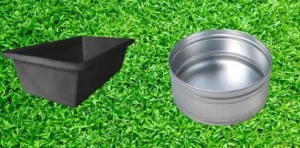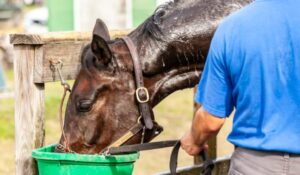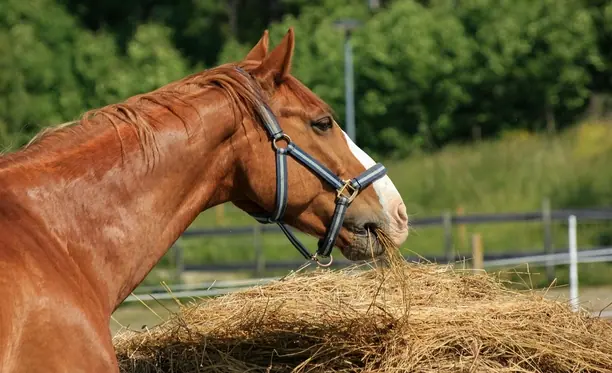HORSE
The Ultimate Guide to Horse Water Troughs: Types, Maintenance, and Benefits

Introduction
The horse water troughs, often shaped like something that holds water, are significant to have as horses have to drink a lot of water to be healthy as if they were humans that need water for all the main physiological functions like digestion, cooling, and to wet moving parts of their body.
A horse water trough is a device that contains water for horses to drink. It is essential to have one because horses require a lot of water to be healthy. Much like humans, horses need water for their lives; while digestion is going on, they need it for cooling, and lubrication is necessary for the body’s moving parts. A lack of adequate water makes horses fall ill. A nice water trough is a must-have for every horse carer.
Why Water Troughs Are Imperative to Horse Care
So, water troughs are suitable because they allow a constant supply of clean drinking water. Generally, a horse will drink 5 to 10 gallons per day… or more, depending on the size and outside temperature. As a sort of vehicular stomach pain, dehydration can then come to shortness colic — and they’ll promptly be in precarious health if not for water. Water helps with digestion of the things they have munched down, keeps their muscles moving so that fat birds can avoid you better, and keeps them cool in hot weather.
Types of Horse Water Troughs
Several horse water troughs are made from different materials, including metal or plastic and the latest automatic waterers.

Metal Water Troughs
It is solid and durable and does not break easily. It can be left outdoors in varying weather conditions. However, it can get hot in summer and extremely cold in winter, affecting the comfort of horses’ water intake.
Plastic Water Troughs
These are lighter and more mobile. They do not become as hot or cold as metal troughs, making the water more comfortable for the horses. However, they crack or break more easily than metal troughs.
Automatic Waterers: The Ultimate in Convenience and Efficiency
Automatic waterers are special troughs that refill on their own. They can be very convenient because you won’t need to constantly check and fill up the water. They can also ensure that the horse always has fresh drinking water. On the other hand, they are more expensive and demand more maintenance to ensure they keep working properly.
Factors to Consider While Shopping for a Trough
Here are the most important things to consider when choosing a water trough:
Size and Capacity
You want a capacity that will hold enough water for all your horses. You would like to have a larger trough or even several if you have a big herd.
Durability and Material
The trough should be solid and durable to last long. It would be best to base your choice on the weather in your area and the material that can endure it.
Trough Hygiene
Select a trough that you can clean easily. Since horses need clean water, you’ll be required to clean the trough frequently to remove dirt and algae.
Proper Placement of Water Troughs
It’s also essential where you put the water trough.
Ideal Locations in Pastures and Stables
Place the trough in a location that is easy for horses to reach. In a pasture, it could be near the shade to keep the water cool. In a stable, it’s where horses can find it easily.
Making the Access to Horses Easy
Be sure all your horses have easy access to the trough. This may be as simple as having multiple troughs if you have a lot of horses or if some horses are dominant and block others from drinking.
How to Care for Horse Water Troughs
Keep the Water Clean and Fresh
Clean the trough regularly. This involves scraping out all dirt and algae. You will probably need a brush and some bleach. After cleaning the troughs, make sure there is no bleach in them.
Algae Control
Adding apple cider vinegar to the water is the best way to prevent algae. This helps kill the algae’s growth.
DIY Horse Water Trough Ideas
Budget-Friendly Solutions for Horse Owners
You can save some money by simply making a water trough. Clean and safe barrels or even an old bathtub will do just fine.
Steps in Making a Horse Trough
- Get a sizeable leak-proof container.
- Make sure it is clean with no sharp edges.
- Please place it in an appropriate location where horses can easily reach the water.
- Fill it with clean water.
Troubleshooting and Common Problems and Their Solutions
How to Fix Leaks and Breakages
If your trough leaks, you can seal it using waterproof sealant. For small cracks, you can use a patching kit.
How to Handle Frozen Water during Winter
Water may freeze in winter. Methods of preventing this include a heated water trough or something floating, such as a ball, on top of the water to stop it from freezing solid.
Benefits of Good Quality Water Troughs
Better Water Intake of Horses
Good quality water troughs keep the water at the right temperature and clean; hence, horses are more likely to drink sufficient water.
Better Overall Health and Well-being
If horses drink enough clean water, they are generally healthier and more energetic. Suitable water troughs may also prevent health problems.
Endnote
Choosing a suitable water trough is essential for your horses’ health and happiness. When picking out a trough, consider the size, material, and ease of cleaning. Proper placement and regular maintenance will ensure that freshwater is always on hand for your horses to drink.
Read more Articles

Home
The Ultimate Guide to Senior Horse Nutrition: Unlocking Vitality

Introduction
With horses aging, their nutrition changes and therefore calls for a special attention to maintain them in good health. The right feed is important for your senior horse to support digestive health, energy levels and well being. In this guide, we tackle senior horse nutrition basics alongside three popular feeds available across the U.S. Fortunately, a little knowledge of what the aging horse needs dietarily can go a long way toward meeting those needs and see that an equine companion thrives in later years.
Why Senior Horses Require Specialized Nutrition
Fiber digestion becomes less efficient in senior horses (ages eight to ten years and older). This is due to two main factors:
- Digestive Efficiency: The difficulty arises from the need for fiber in a healthy digestive system, and the fact that aging horses can’t eat it. Fiber allows for food to go through the digestive tract and gives energy.
- Dental Challenges: With age, horse’s teeth can degenerate so that they cannot properly grind off grass and pull the nutrients out of it. So they figure, just because they’re eating the same amount of forage as a young horse, it doesn’t necessarily mean that an older horse will glean the same nutritional benefits from it.
Senior feeds have higher levels of digestible fiber accompanied by essential vitamins and other nutrients, which enable the horses to maintain ideal health along with adequate energy levels. Senior horse nutrition is among the most important aspects that can help brighten the quality of life in equines.
Key Features of Senior Horse Feeds
These feeds are specifically manufactured to align with the unique dietary needs of aging horses. It include:
- High Digestible Fiber: Whether it is beet pulp or soy hulls, fiber rich ingredients included in senior feeds are to help in maintaining digestive health and nutrient absorption.
- Balanced Protein and Fat Content: Protein supplies to support maintenance of muscle and fat provides a concentrated source of energy especially for horses with reduced appetite.
- Pre and Probiotics: These additives can help senior horses better utilize their feed and keep their guts healthy and their digestion strong.
- Additional Vitamins and Minerals: Higher levels of vitamin E, selenium and other antioxidants are included in senior feeds to help a cat’s immune system and general health.
Even though not all aged horses need aged feed, it is advantageous to those exhibiting age-related deficiencies in nutrition and/or digestive concerns. Optimal senior horse nutrition choice for aged horses ensures general well-being.
Comparing Three Popular Senior Horse Feeds
Here are three widely available senior horse nutrition, their key characteristics, and the scenarios where they are most beneficial:
1. Nutrena ProForce Senior
Active senior horses can benefit from the Nutrena ProForce Senior feed. Key features include:
- Calorie Content: A high calorie content making it ideal for active senior horses or those that get regularly ridden.
- Protein and Fat: This contains 14% protein and 11% fat for long lasting energy and muscle support.
- Digestible Fiber: This is rich in fiber which helps keep your gut healthy.
This feed is great for owners who want their active senior horses to be full of energy and healthy. It is one of those diets that are intended for energy-hungry horses, while at the same time, it assists in nutrition improvement for mature horses.
2. Purina Senior
The Purina Senior feed is a more budget-friendly senior horse nutrition option, offering basic nutritional support:
- Calorie Content: Lower calorie than other senior feeds for the less active horse.
- Protein and Fat: It contains only 5.5% fat, and 14% protein (making it not suitable for very active senior horses).
- No Pre and Probiotics: It doesn’t seem to be doing too much for the digestive process, a concern to horses with delicate stomachs.
It is an affordable feed, but some older horses require more calories and more fat. The Purina Senior feed may not be sufficient for such horses. However, for moderately active horses who do not want to spend much on senior horse nutrition, it is still a good choice.
3. Triple Crown Senior
The Triple Crown Senior feed is a premium option, comparable to Nutrena ProForce Senior in quality:
- Calorie and Fat Content: It is very ideal for most geriatric horses due to its contents of 14% protein and 10% fat.
- Pre and probiotics: filled with pre and probiotics which assist in improving your gut health and digestion.
- Digestible Fiber: There is high fiber content for smooth digestion and nutrient absorption.
Triple Crown Senior feed is a flexible feed for older horses because it was designed to meet their nutritional needs and contains added digestive help. This formula is particularly valuable as it fits into a senior horse nutrition plan that require added digestive support well.
How to Choose the Right Senior Nutrition for Your Horse
When selecting a feed for your senior horse, consider the following factors:
- Activity Level: If you have an active senior horse, a feed with a higher amount of calories and fat, such as Nutrena ProForce Senior or Triple Crown Senior, may be in order.
- Digestive Needs: Pre and probiotics are also useful if your horse has difficulty digesting.
- Budget: Pick a feed that fulfills your horse’s specific needs in a balanced way, quality wise and in terms of affordability. Purina Senior is a cheap food and would be a good option if you care about cost.
- Veterinarian Advice: It’s always best to consult with a veterinarian or equine nutritionist for a specific recommendation to your horse’s health and lifestyle.
Tips for Feeding Senior Horses
Proper feeding practices can make a significant difference in your horse’s overall health and well-being. Here are some tips:
- Monitor Weight: Constantly check on your horse’s weight and body condition to make sure they get the right amount of nutrition. Keep altering their feed as needed to make sure they keep a healthy weight.
- Ensure Access to Fresh Water: Digestion and overall health require senior horses to be kept sufficiently hydrated.
- Supplement When Necessary: If your veterinarian recommends it, you could add supplements for joint health, vitamins or minerals.
- Provide Dental Care: Routine dental check ups stop your horse from chewing and digesting feed effectively. Senior horse nutrition requires this.
- Feed Small, Frequent Meals: Senior horses digest and absorb nutrients from their feed more effectively if their daily ration is divided up into smaller meals.
Conclusion
Feed is essential to give your senior horse proper nutrition to keep them healthy, energetic and prolong their quality of life. No matter if you are choosing Nutrena ProForce Senior, Purina Senior, Triple Crown Senior, it will be better for you to understand the needs of your horse that help you choose the best stuff. Actually, with some forethought and maintaining a balanced attitude towards senior horse nutrition, you can make sure that your equine companion stays flourishing during their golden years.
As well as just feed, senior horse nutrition is about taking the time to understand your special horse and making your sustainable choices regarding their needs. By caring for and feeding your senior horse just right, your horse can remain healthy and active for years to come.
Faqs
1. What are some signs that my horse might need senior-specific feed?
Senior horses may lose weight despite eating well, have difficulty chewing, or show reduced energy levels. These signs indicate they may benefit from a feed designed for their nutritional needs.
2. Can younger horses eat senior horse feed if needed?
Yes, senior feed can be given to younger horses with specific dietary needs, such as poor digestion or dental issues, as it is highly digestible and nutrient-rich. Always consult with a veterinarian first.
3. How does age affect a horse’s ability to absorb nutrients?
Digestive efficiency for fiber, and also essential nutrients such as calcium and phosphorus, declines with age. This decline can be compensated by specialized feeds that help keep the health.
4. Are there alternatives to senior feed for aging horses?
Other possibilities include replacing forage with sources of high fiber, such as soaked beet pulp, or adding fat supplements for energy. Also, regular dental care improves nutrient absorption from standard feeds.
5. How often should I reevaluate my senior horse’s nutrition plan?
Every 6–12 months or when there is a decrease [or increase] of weight, change in activity level, or any health changes, a senior horse’s diet should be reviewed. Regular vet check ups will show the way of necessary adjustments.
Also read: https://skystylus.com/horse-water-troughs






Pingback: Understanding the Red African Grey Parrot: Costs, Lifespan, Maintenance, and Talking Abilities - skystylus.com
Pingback: 15 Human Foods That Your Cat Can Eat: Top Treats to Enhance Your Feline's Diet - skystylus.com